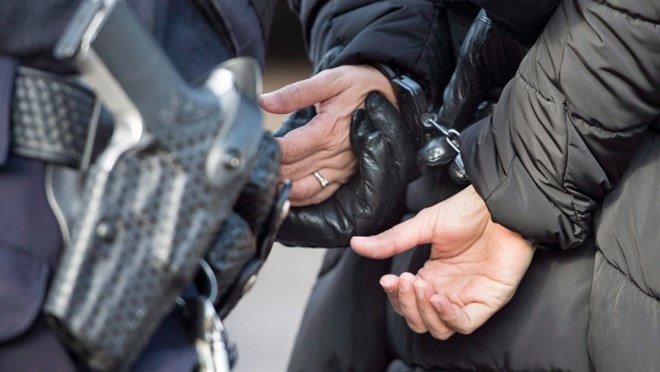
Saturday March 18, 2017
By Cameron MacIntosh
Federal, provincial and non-governmental agencies all keep statistics in different ways

At first they seem to be simple questions.
How many asylum seekers have come into Canada? How many are being allowed to stay?
We've been asking, and the simple answer is: it's not that simple.
From their very first steps over the border, asylum seekers are quickly caught up in a system involving numerous federal, provincial and non-governmental agencies, all of which keep information and statistics in different ways — but none of which specifically track the number of people filing asylum claims after crossing the border illegally.
The two frontline agencies involved, the RCMP and the Canada Border Services Agency (CBSA), are no longer releasing this type of data. They both say the information is difficult to track consistently from region to region.
Through a combination of previously released numbers and repeated information requests to several agencies, we've attempted to break it down.
How many people have crossed?
That's almost impossible to know. The more than 6,400-kilometre-long southern Canada-U.S. border is wide open and undefended.
Under the Safe Third Country Agreement, Canada generally does not accept refugee claimants coming in via the U.S., but there are exceptions. Canada is also a signatory to the United Nations Refugee Convention, so those who sneak through the border crossing can be given permission to make a claim here.
The fastest way border crossers can do that is go directly to a CBSA office or get picked up by police and sent to the CBSA.
For the first two months of the year the CBSA says 2,176 people made asylum claims. But that figure captures both those who made claims at border crossings and those who snuck through and were later allowed to make a claim.
Immigration, Refugees and Citzenship Canada (IRCC) also accepts asylum claims, from people who are already in Canada. Once again, this data captures not only those who have snuck in but also many who are already here legally, like on a student visa, for example.
In other words, neither of the national agencies that deal with asylum claims can say how many are coming from people who have just walked over the border.
At one point, the Manitoba office of the CBSA was providing statistics on refugee claimants who crossed illegally, but the numbers were often contradictory from month to month and became unreliable. The department said that was due to a "clerical discrepancy" in their year-to-year stats, and that stats across regions "were being captured differently."
It has now ceased providing that information, referring inquires instead to the RCMP.
This week, the RCMP in Manitoba also stopped providing numbers, claiming it wants a "more consolidated national approach."
Who gets to stay?
When someone files a refugee claim, it goes to the Immigration and Refugee Board (IRB) for consideration. The agency has no way of knowing from the claim application how the person entered the country.
The IRB considers that information "irrelevant" to whether a claim is valid.
Adding to the confusion, the IRB's statistics — which include new claims and decided claims, whether accepted, rejected, withdrawn or abandoned — are typically released on a three-month delay.
However, for the first two months of this year, the release was fast-tracked in Manitoba.
The view from Manitoba
While it's certainly not the whole picture, Manitoba is the easiest place to put it all together because:
- The is only one main location for border crossings.
- There is only one police agency involved.
- Most applications are being handled by one settlement agency.
- And the data collection between agencies is the most up to date.
- The RCMP confirmed they picked up 143 people who snuck across the border between January 1 and Feburary 28, 2017, near Emerson, Man., and sent them to the CBSA office there.
(The CBSA says it processed a total 126 asylum claims in this period, but has also said it's reporting takes time to fully update.)
Of those 143 people, 136 border crossers went on to Winnipeg and made contact with the Welcome Place settlement agency.
As for the other seven, it's possible they filed claims on their own, went to file in a different province or went underground.
It's also possible some were denied entry and detained pending removal from the country. The CBSA said it has denied entry to some border crossers who didn't pass a security check, but declined to specify how many crossed illegally.
Manitoba Justice says there are currently eight people in provincial custody on immigration matters. CBC News has confirmed one was a border crosser.
For that Jan. 1-Feb. 28 time period, the Manitoba office of the IRB says it has received 48 new asylum claims. It appears many of them intend to stay, because the province confirms it received 43 claims for social assistance from refugee claimants during a similar period.
What the numbers say
That means, as you move along the system, there are about 100 people who just disappeared into the stats. Either their claims haven't shown up in the data yet or they haven't made claims in Manitoba.
Lags in reporting and updating stats by various agencies accounts for some of that.
But it's also possible we're simply losing track of some asylum seekers as they move around. Many border crossers CBC News spoke to in Manitoba told us they were trying to get to Toronto.
Federal Public Safety Minister Ralph Goodale has repeatedly said the government is analyzing the data.
Meanwhile, it's a good bet that as the weather warms, more people will come.